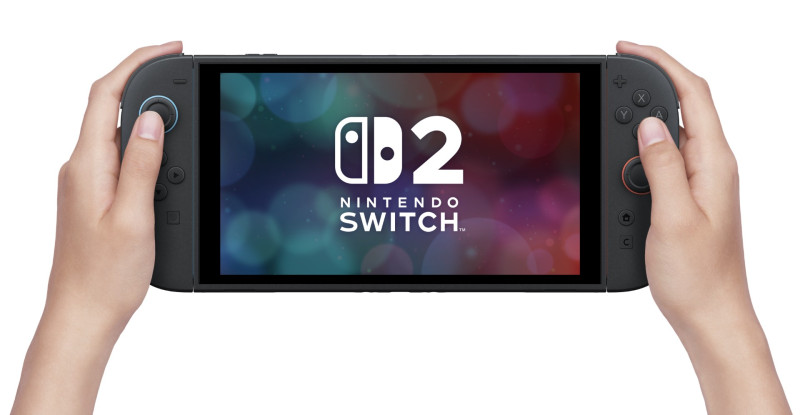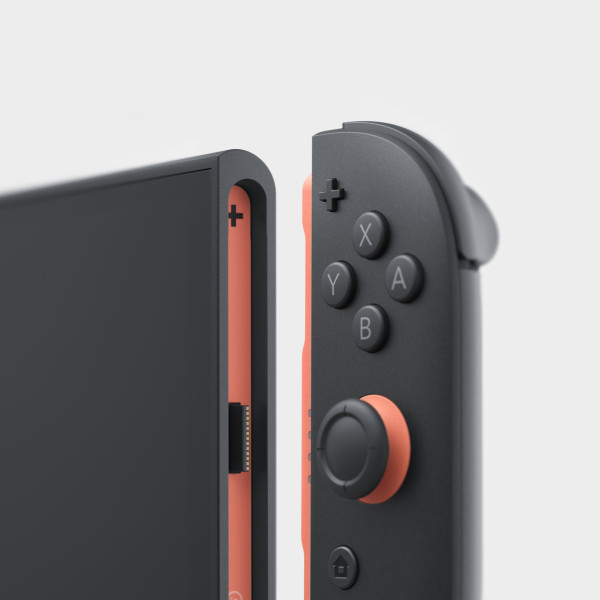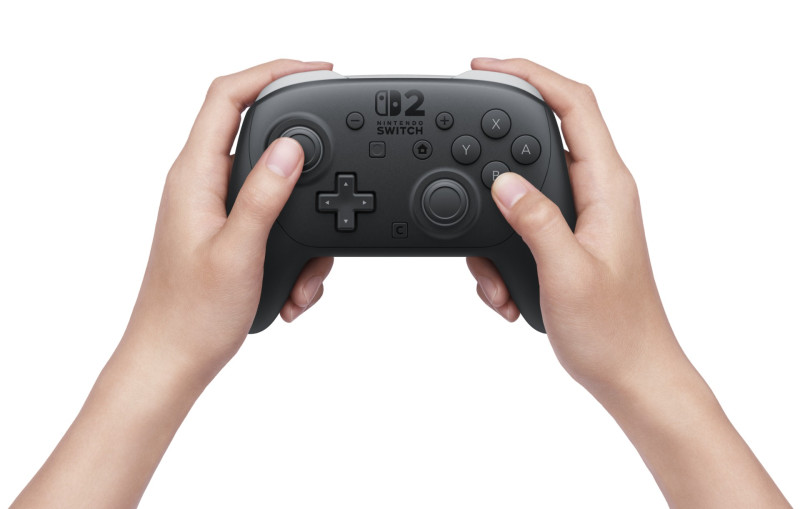Reading List
Nintendo Switch 2 Hands-On Preview from Game Informer RSS feed.
Nintendo Switch 2 Hands-On Preview

Developer:
Nintendo
The Nintendo Switch launched on March 3, 2017, not only pulling gaming’s most iconic name out of its Wii U downturn but also revitalizing and revolutionizing the handheld gaming market due to its innovative hybrid nature. Now, more than eight years later, Nintendo has finally pulled back the curtains on its direct successor, Nintendo Switch 2.
Though the elevator pitch is that it’s a bigger and more powerful version of the system that has sold more than 150 million units in its eight-plus years of life, I walked away from my recent extended hands-on session with Nintendo Switch 2 rather impressed.
Hands-On with Nintendo Switch 2:
The sleek design of the Nintendo Switch 2 immediately catches the eye, whether behind a display case like my first encounter with the upcoming console or resting in my hands as I play the hotly anticipated launch title Mario Kart World. The 7.9-inch LCD screen looks big even when compared to the 7-inch Switch OLED model, and it absolutely dwarfs the 6.2-inch screen of the original Switch model.
I was initially concerned when I heard it was an LCD screen instead of what should be the industry standard for handheld devices going forward in OLED, but the system’s creators are confident in their display decision.

“There are a lot of advancements that have been made in LCD technology,” Nintendo Switch 2 hardware design lead Tetsuya Sasaki says during a Switch 2 developer roundtable. “During the development, we took a look at the LCD technology that was available to us now, and after a lot of consideration, we decided to stick with LCD.”
My initial fears were immediately dashed away as I fired up Mario Kart World during my first hands-on session. The 1080p resolution and smooth framerate look terrific on such a small screen. With support for up to 120 frames per second, it delivers exceptional performance in a form factor that is the same thickness as the original Nintendo Switch. However, the biggest differentiator in my time with Nintendo Switch 2 is its ability to display more vibrant colors and lighting thanks to its HDR capabilities.
 Mario Kart World
Mario Kart World
“Even with the OLED version of Nintendo Switch, we hadn’t had support for HDR, but that’s something we have support for now,” Nintendo Switch 2 producer Kouichi Kawamoto says.
Most of my demos took place in docked TV mode, but Mario Kart World looks terrific on the Switch 2 screen. Nintendo also touts better speakers in Switch 2, though it was difficult to test that out due to a loud gameplay environment.
If you’d prefer to play in Tabletop mode, the kickstand is substantially more durable and adjustable than that of the original Switch, making Tabletop mode much more versatile and viable. I don’t anticipate worrying that I’ll accidentally snap this stand off or that it’ll be unstable in any way.

Though the ability to play on the go is one of Switch and Switch 2’s main attractions, I typically enjoy my games on the TV, and that is precisely where most of my gameplay sessions take place. Removing the Joy-Cons from the Switch 2 is not quite as easy as the rail-based system of the original Switch, but the button-release magnet system that holds the Joy-Con 2s in place feels much sturdier than the Switch 1’s rails. Removing and replacing the Joy-Con 2s to the Switch 2 has a tiny learning curve, but after completing the process a few times (and learning that it’s easier if you connect the bottom of the Joy-Con, and then the top), I had the process down.
I didn’t get the opportunity to try out GameChat or any of the social elements involving the built-in microphone or the additional camera, but I did spend some time playing camera-based games in the Nintendo Switch 2 Edition of Super Mario Party Jamboree. These games, which involve squatting and standing when the Talking Flower from Super Mario Bros. Wonder tells you to, waving your hand to hit a block as many times as possible in a short period, or just moving and making as much noise as possible, work well. The camera aptly separated each of the four players in their side-by-side playspaces, removed the background, and transposed each person to the in-game environment as individual entities.
There was only one occasion where the camera had difficulty recognizing that one of the players stood up at the correct time, but it could have been because the player’s shirt color was nearly identical to the wall behind us. The applications of the camera and microphone outside of GameChat give me a lot of hope for ideas developers might come up with in future titles, and after this short demo, the camera went from a potential pick-up at launch to a must-have for me.
 Civilization VII
Civilization VII
As well-utilized as the camera is, the Joy-Con 2 mouse functionality was perhaps the most pleasant surprise of my entire demo. By turning the Joy-Con 2 sideways, you can instantly activate its mouse capabilities where supported. Switch 2 versions of games like Civilization VII and Metroid Prime 4: Beyond allow you to use the mouse functionality, but rather than going into a menu to select it, you simply turn the Joy-Con 2 sideways and place it directly onto the table or even your legs. I was shocked at how I could go from traditional controls in Civ VII to using a combined control scheme where my left Joy-Con functioned almost as a PC’s WASD while my right Joy-Con turned into a mouse with a simple turning of my wrist. Similarly, my gameplay session of Metroid Prime 4: Beyond allowed me to go from traditional FPS controls with motion controls for fine-tuned aiming to mouse-style aiming with no menus whatsoever.
Not only is it simple to activate in those cases, but it works remarkably well. And with small pads on the sides of the Joy-Con 2s, I never felt like I was in any danger of damaging the controller, even with aggressive mouse movements like with the wheelchair basketball game Drag x Drive or the newly added Super Mario Party Jamboree mouse minigames.
For the other games I checked out, I used the Switch 2 Pro Controller, which feels similar to that of the original Switch with two changes: the inclusion of the C-button for GameChat and the addition of two mappable back buttons similar to those found on high-end controllers. The back buttons weren’t mapped in my gameplay sessions, but as someone who often uses those back buttons on my Xbox Elite Controller, I’m excited to have more options with this new Pro Controller. However, if you already have a Switch Pro Controller and don’t want to drop additional money just for the back buttons and C-button, all Switch 1 accessories work with Switch 2.

When you combine my hands-on impressions of the Nintendo Switch 2 with the proven track record for the Switch brand, an excellent opening game-lineup salvo, and other features like 256 GB of internal storage, sweeping backward compatibility, and bigger SL and SR buttons for more comfortable sideways Joy-Con play, the Nintendo Switch 2 feels like a worthy successor to one of the best-selling video game systems of all time. With just around two months to go until launch, I’m already eagerly anticipating getting my hands on my own Switch 2 and beginning this long-awaited next era for Nintendo.
Nintendo Switch 2 arrives on June 5.